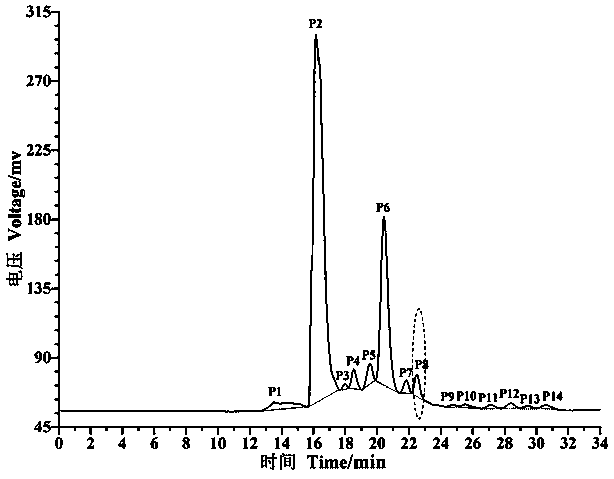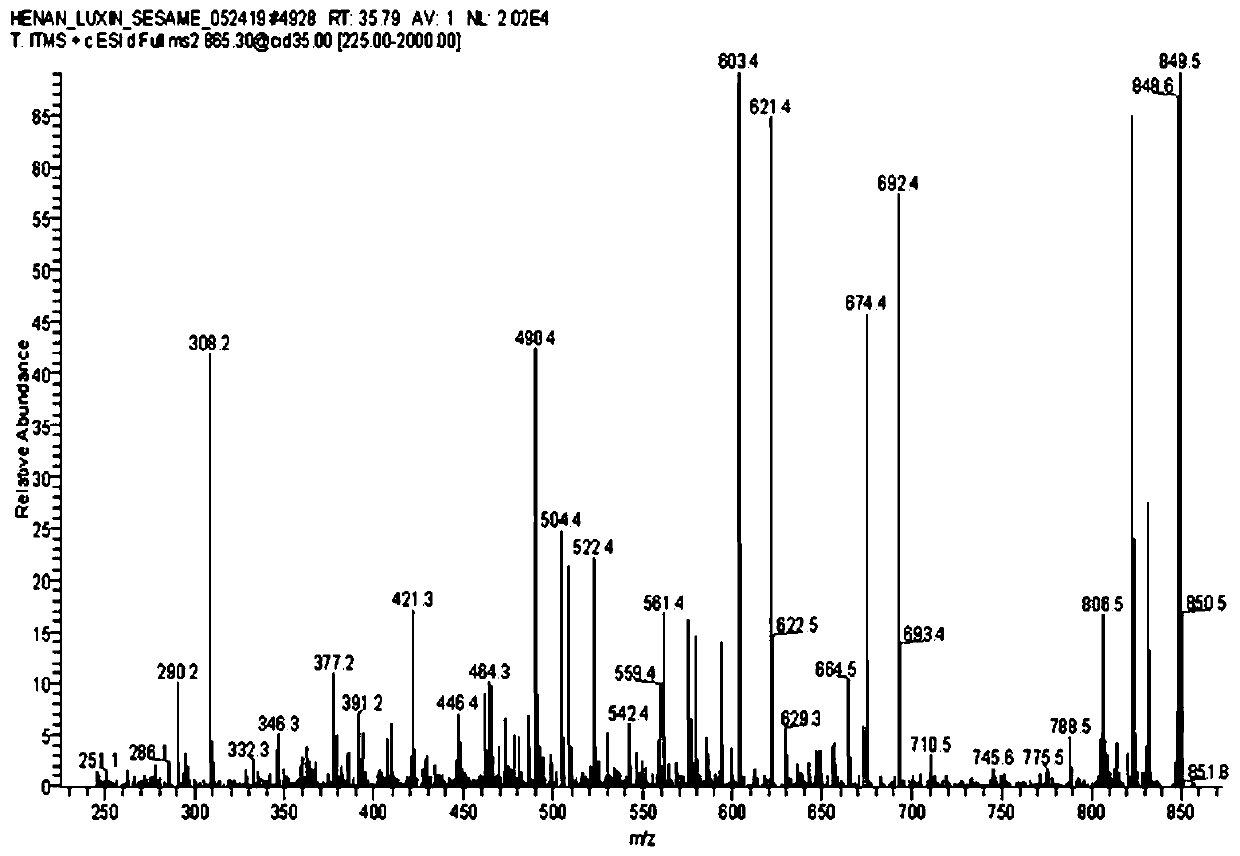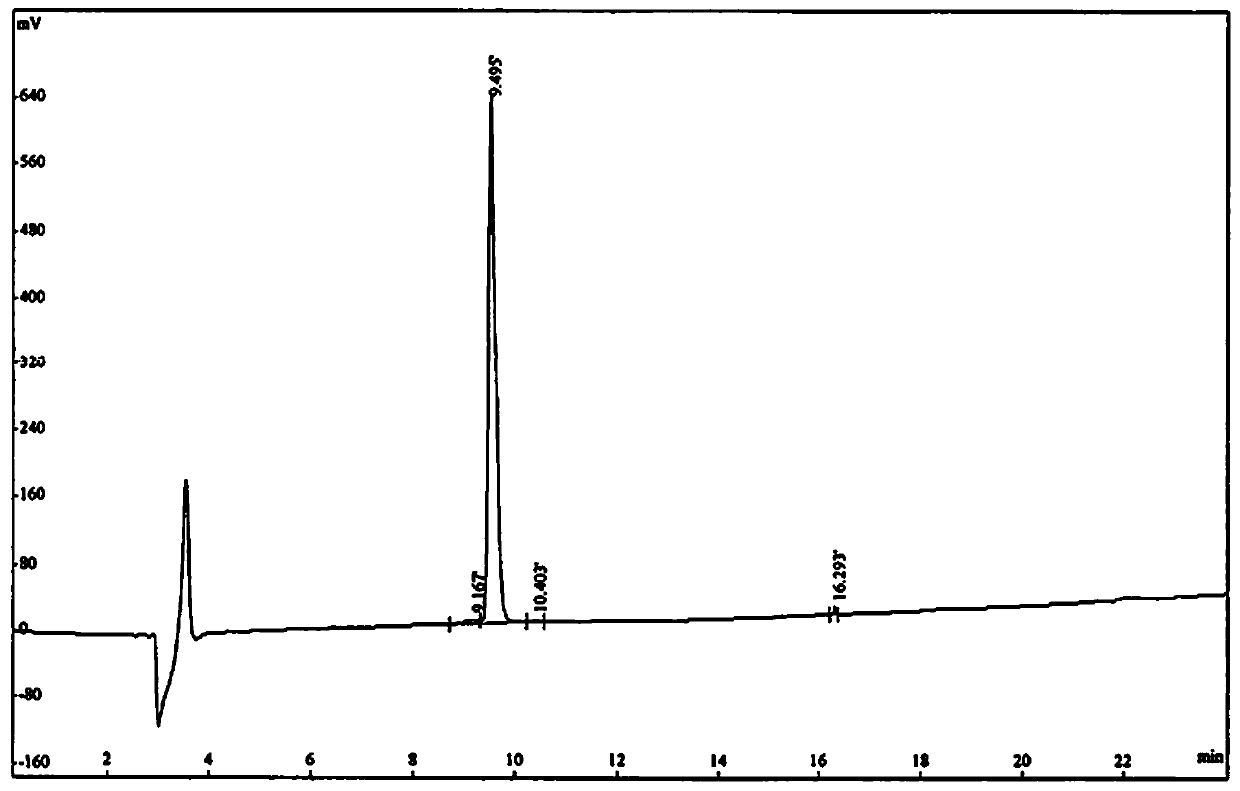Sesame polypeptide and preparation method and application thereof
A technology of sesame and solid-phase synthesis, which is applied in the field of deep processing of plant protein, can solve the problems of low processing degree of sesame protein, underutilization of sesame protein resources, backward processing technology, etc., and achieve cost controllable, significant activity, and raw material utilization high rate effect
- Summary
- Abstract
- Description
- Claims
- Application Information
AI Technical Summary
Problems solved by technology
Method used
Image
Examples
Embodiment 1
[0034] A method for extracting sesame polypeptide from sesame protein, which specifically comprises the steps:
[0035] 1) Sesame protein extraction:
[0036] Take 0.5 kg of sesame without impurities and mold particles, crush it to 60 mesh, and use a Soxhlet extractor for degreasing. h. Add the defatted sesame seeds to distilled water at a material-to-liquid ratio (w / v) of 1g:12ml, adjust the pH to 10 with sodium hydroxide, stir at room temperature for 90 minutes, then centrifuge at 4000 r / min for 30 minutes, take the supernatant and adjust the pH To 4.5, centrifuge at 4500 r / min for 30 min, collect the precipitate, wash with distilled water 3 times, freeze-dry to obtain sesame protein, and seal it for later use.
[0037] 2) Proteolysis:
[0038] The obtained sesame protein in step 1) is added in distilled water to obtain a sesame protein solution according to the material-to-liquid ratio of 1g:10ml (w / v), the pH value is adjusted to 2.0, and 0.5% (w / v) is added, that is, 0...
Embodiment 2
[0044] A method for artificially synthesizing sesame polypeptide, which adopts solid-phase synthesis method for artificial synthesis. The basic process is as follows: first, an amino acid whose amino group is protected by the Fmoc group is attached to the insoluble solid-phase carrier Wang resin, and then the protecting group of the amino group is removed, and the first amino acid is attached to the solid-phase carrier; The carboxyl group of the second amino acid protected by the Fmoc group is activated with a condensing agent, and the activated amino acid reacts with the amino group of the first amino acid attached to the solid support to form a peptide bond. A dipeptide with a protecting group. Repeat the above-mentioned peptide bond formation reaction, so that the peptide chain grows from the C-terminus to the N-terminus until the desired length of the peptide chain is reached, and finally the target polypeptide Glu-Ala-Cys-Ile-Gln-Ala-Cys-Lys (EACIQACK) is obtained by cutt...
PUM
 Login to View More
Login to View More Abstract
Description
Claims
Application Information
 Login to View More
Login to View More - R&D
- Intellectual Property
- Life Sciences
- Materials
- Tech Scout
- Unparalleled Data Quality
- Higher Quality Content
- 60% Fewer Hallucinations
Browse by: Latest US Patents, China's latest patents, Technical Efficacy Thesaurus, Application Domain, Technology Topic, Popular Technical Reports.
© 2025 PatSnap. All rights reserved.Legal|Privacy policy|Modern Slavery Act Transparency Statement|Sitemap|About US| Contact US: help@patsnap.com



